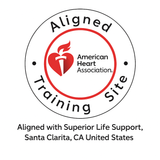Step-by-Step Guide: What to Do During a Sudden Cardiac Arrest
Understanding Sudden Cardiac Arrest (SCA)
Sudden cardiac arrest (SCA) is a life-threatening emergency that occurs when the heart unexpectedly stops beating, cutting off blood flow to the brain and other vital organs. Immediate action is crucial to increase the chances of survival. Here, we provide a step-by-step guide on what you should do if you encounter someone experiencing SCA.
Step 1: Recognize the Signs
It's essential to identify the symptoms of SCA quickly. Common indicators include sudden collapse, no pulse, no breathing or only gasping, and loss of consciousness. If you notice these signs, it's time to act immediately.
Step 2: Call Emergency Services
Dial 911 immediately. Inform the operator that the person is having a cardiac arrest and provide your exact location. Stay on the line until they have all the information they need.
Step 3: Begin CPR
While waiting for emergency services, start CPR. Push hard and fast in the center of the person's chest at a rate of 100 to 120 compressions per minute. If you are trained in CPR, provide rescue breaths after every 30 compressions. If not, continuous chest compressions without rescue breaths are still effective.
For those interested in learning CPR, consider enrolling in a CPR class near Long Beach to get certified and prepared.
Step 4: Use an Automated External Defibrillator (AED)
As soon as an AED is available, turn it on and follow the voice prompts. Place the pads on the person's bare chest as instructed. The AED will assess the heart rhythm and determine if a shock is needed. If a shock is advised, ensure no one is touching the person and press the shock button.
Step 5: Continue CPR Until Help Arrives
Continue providing CPR until emergency services take over or the person shows signs of life, such as breathing or movement. Remember, your actions can significantly increase the person's chances of survival.
Getting Trained in CPR
Being prepared is the best defense against SCA. Consider enrolling in one of our American Heart Association (AHA) certified courses to ensure you know what to do in an emergency. Visit our Top Classes page to find a course that suits your needs.
For more information or to book a class, please contact us today. Our certified instructors are ready to help you gain the skills and confidence needed to save a life.


